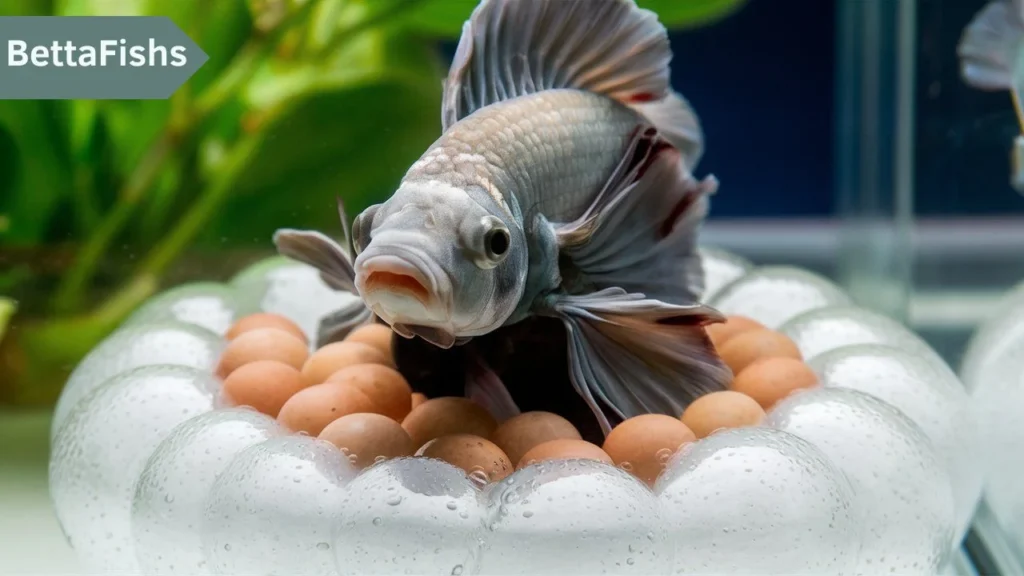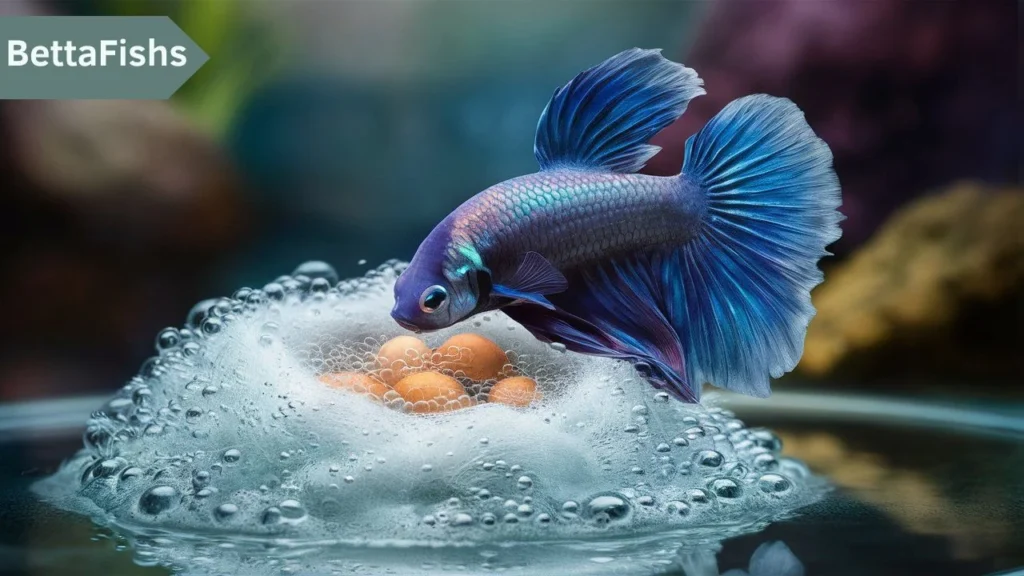Betta fish, also known as Siamese fighting fish, are among the most popular and fascinating pets in the world. Their vibrant colors and unique personalities make them a favorite choice for both beginner and experienced aquarists. But when it comes to breeding these little beauties, many enthusiasts wonder: “How many eggs do Betta fish lay?”.
Betta Fish Breeding
The Breeding Process of Betta Fish
Breeding betta fish is a delicate process that requires careful attention and preparation. Before we get into the numbers, it’s essential to understand how betta fish breed. Unlike many other fish species, bettas have a unique mating ritual that involves bubble nests and careful guarding of the eggs by the male.
Courtship and Mating
The courtship between a male and a female betta is a fascinating display. The male betta builds a bubble nest at the surface of the water, where he plans to care for the eggs. The female, once ready, will approach the male, and they will engage in an elaborate dance that can last several hours.
The Bubble Nest
The bubble nest is crucial for betta fish breeding. Made by the male, this nest consists of tiny air bubbles coated with saliva, which makes them sticky enough to hold the eggs. This nest serves as a safe haven for the eggs until they hatch.
Egg-Laying and Fertilization
Once the courtship is successful, the female betta releases eggs, which the male fertilizes immediately. The male then gathers the eggs in his mouth and delicately sets them in the bubble nest. This process continues until the female has laid all her eggs.
How Many Eggs Do Betta Fish Lay?
Average Egg Count
On average, a female betta fish can lay anywhere from 30 to 500 eggs in a single spawning session. However, the exact number can vary widely based on factors such as the female’s health, age, and overall conditions in the breeding environment.
Factors Affecting Egg Count
Age of the Female Betta
Younger bettas may lay fewer eggs, typically ranging from 30 to 100, while mature, healthy females can lay several hundred eggs.
Health and Nutrition
A well-nourished betta fish is likely to produce more eggs. Providing a balanced diet rich in protein and other essential nutrients can significantly increase the number of eggs laid.
Breeding Environment
The environment plays a crucial role in the breeding success of betta fish. A calm, warm, and clean tank encourages the female to lay more eggs. Stress or poor water conditions can reduce the number of eggs produced.

The Role of the Male Betta After Egg-Laying
Egg Protection and Incubation
After the eggs are laid and placed in the bubble nest, the male betta takes on the role of protector. He guards the nest fiercely, ensuring that no harm comes to the eggs. He also continues to blow more bubbles to strengthen the nest.
Caring for the Eggs
The male betta carefully tends to the eggs, making sure they remain in the nest. If any eggs fall out, he will catch them and place them back in the nest. This care continues for about 24 to 36 hours until the eggs hatch into tiny fry.
Hatching and Fry Development
The Hatching Process
Betta eggs normally hatch between 24 to 48 hours of being laid. The fry, or baby bettas, are incredibly tiny and rely on their yolk sacs for nourishment during the first few days.
Fry Growth and Care
Once the fry has hatched, the male continues to care for them until they are free-swimming, which usually takes another 24 to 36 hours. After this, the fry begin to swim independently, and it’s often recommended to remove the male betta from the tank to prevent him from eating the fry.
Feeding the Fry
In the first few days, the fry feed on their yolk sacs. After this period, they can be fed infusoria, baby brine shrimp, or specially prepared fry food. Proper nutrition is crucial for their growth and development.
Common Challenges in Betta Fish Breeding
Low Egg Count
Sometimes, bettas may lay fewer eggs than expected. This can be due to stress, poor diet, or unsuitable breeding conditions. Ensuring optimal conditions and providing a high-quality diet can help address this issue.
Infertility in Bettas
In some cases, eggs may not be fertilized, resulting in no fry hatching. Infertility can be due to the age or health of the bettas, or sometimes, it may be a natural occurrence with no apparent cause.
Male Betta Eating the Eggs
While male bettas usually protect the eggs, some may eat them. This behavior can be caused by stress or inexperience. If a male is known to eat eggs, it might be necessary to separate him after the eggs are laid.

Conclusion
Breeding betta fish can be a rewarding experience, but it requires patience, knowledge, and careful attention to detail. On average, female bettas can lay anywhere from 30 to 500 eggs, depending on various factors such as age, health, and breeding conditions. Understanding the breeding process, providing the right environment, and caring for both the adult fish and the fry are crucial steps in successfully raising a new generation of bettas.
FAQs
1. How often can a female betta lay eggs?
A female betta can lay eggs every few weeks, but it’s essential to give her time to recover between spawnings to maintain her health.
2. Can betta fish lay eggs without a male?
Yes, a female betta can lay eggs without a male, but the eggs will not be fertilized and will not hatch into fry.
3. How do I know if my betta is ready to breed?
Signs that a female betta is ready to breed include a noticeable roundness in her belly and the presence of vertical breeding stripes. The male will become more active in building a bubble nest.
4. What should I feed betta fry?
Betta fry can be fed infusoria, baby brine shrimp, or specially formulated fry food. It’s essential to provide tiny, easily digestible food for their small mouths.
5. How long does it take for betta fry to grow?
Betta fry grow rapidly in the first few weeks and can reach adult size in about 4 to 6 months, depending on the conditions and care provided.





One Comment
Leave a ReplyOne Ping
Pingback:How can you tell if a Betta fish Is pregnant?